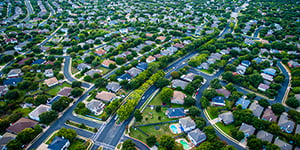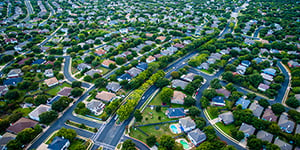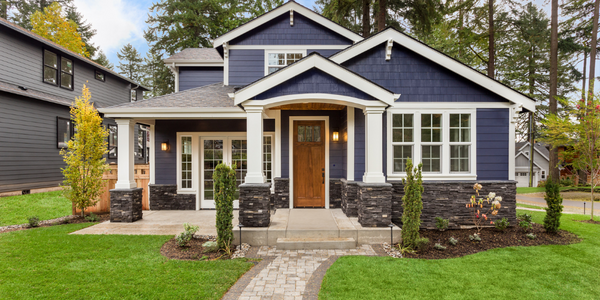
Moving to a new neighborhood can be so exciting! You’ve got a new home to make your own, a neighborhood to explore and different amenities at your disposal. This is a brand-new chapter filled with endless possibilities! 
Once that novelty wears off, however, you want to feel confident you’re just as happy with your new neighborhood as you were when you first drove by it.
So consider these four factors before you lay down your next set of roots in a new neighborhood.
Feel & Fit
There may not be a try-before-you-buy option on new homes (unless you’re leasing to own), but you can certainly take a neighborhood for a spin! Take a little time to drive through and walk around your desired neighborhoods at various times throughout the day. This includes morning rush hour, mid-day, evening rush hour and after dark. And don’t forget about weekends!
This will give you a sense of how active – and noisy – a neighborhood is, and whether that fits with your given schedule and lifestyle. Take note of the amount of car, pedestrian and bike traffic, in addition to where most people tend to congregate. Is the neighborhood bustling in the morning? Is it a ghost town after 5 p.m.? These are all factors you should consider to ensure your family dynamic fits with the rest of the block.
Naturally, crime rates and walkability are other factors to consider. AreaVibes provides a “livability” score based on ZIP code, while WalkScore does the same for walkability. CrimeReports, NeighborhoodScout and Family Watchdog have you covered on neighborhood crime reports and statistics (as do your local police departments). Nextdoor can also be a very useful app if you’re trying to get an overall sense of the neighborhood and the neighbors’ priorities.
Schools
Adults aren’t the only ones moving to a new neighborhood. If you have kids, or are thinking about having kids, the neighborhood’s school district will likely play a role in the location of your new home.
Websites like GreatSchools, SchoolDigger and Niche can help you compare stats like test results, graduation rates, college admission rates and more. Most schools are also happy to give you a tour if you call ahead.
Moving to a new neighborhood with a great school district isn’t just beneficial to families with school-age children. A strong school system is a sign of a good neighborhood. This means good schools tend to equate to a higher home resale value. Plus, neighborhoods in close proximity to well-performing schools tend to have higher walkability scores and lower crime rates. A win-win for everyone!
Medical Services
Access to quality healthcare is often overlooked when we’re moving to a new neighborhood, but it shouldn’t be. This is particularly true if you or a family member has specific healthcare needs.
So do yourself a favor. Scout out all the health and safety services before you move into a new neighborhood. This includes the nearest fire station, police station, 24-hour urgent care, hospital and any other specialty services your family might require.
Go the extra mile and check with your insurance to confirm that you’re covered at the closest facilities. If you’re not, be sure to locate these services and determine whether their proximity to your new neighborhood will work for you.
While proximity to healthcare may not be the deciding factor when moving into a new neighborhood, peace of mind is priceless if the unexpected (or even expected!) does happen.
Lifestyle
Lifestyle is one of those ambiguous terms that means something different to everyone. Whatever your “lifestyle” is, you want to make sure your new neighborhood has it.
For runners, that will likely be wide sidewalks and parks with plenty of paths. Dog owners will want to see dog parks and dog-friendly businesses. New moms will appreciate playgrounds and community centers with plenty of programming, while young professionals may be interested in co-working facilities and rooftop restaurants.
Take a minute to think about the priorities for you and your family. Then make sure your new neighborhood has them, or at least a large number of them. If you know you prefer to cook at home, you don’t necessarily need to pay for a location that’s walking distance to downtown. If you’re an avid swimmer, those bike paths surrounding the city probably don’t do a lot for you…but a community center with an Olympic-sized swimming pool might.
Find what lights you up, and search for a neighborhood that can offer it.
Your dream home doesn’t necessarily end when you close the gate on that white picket fence. It often extends well past your property line and throughout the larger community you’ll call home for the foreseeable future. Make sure your next home investment is a solid one by choosing a new neighborhood that will make you feel like you fit right in.








